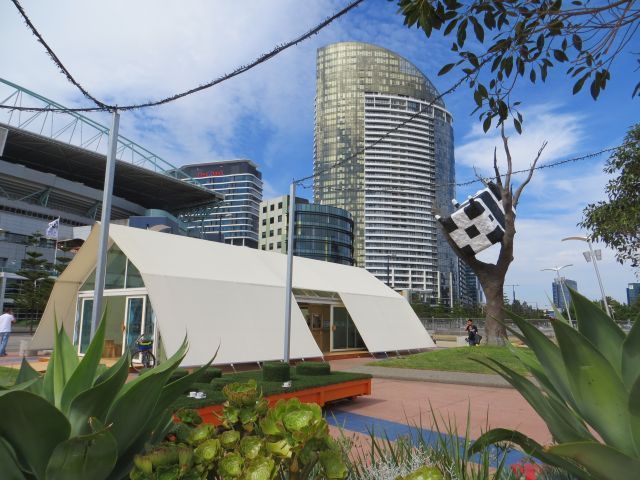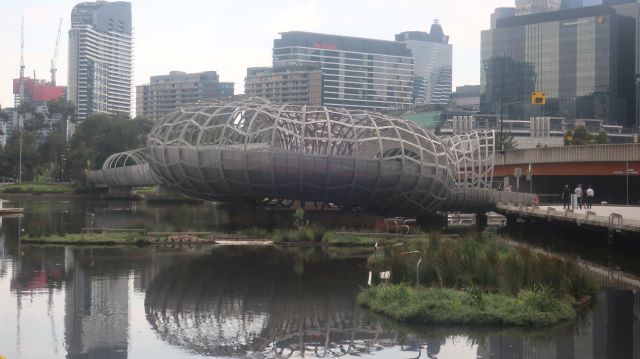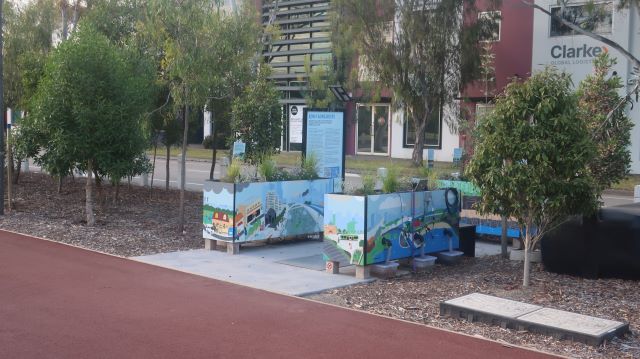
High expectations
Inflated expectations of megaprojects and what happens when things don’t turn out as planned
Docklands is not the only urban megaproject to attract criticism. Dr Stan Majoor, visiting RMIT’s Centre for Urban Research, has investigated Docklands as well as other urban megaprojects in Zuidas (Amsterdam) and Orestad (Copenhagen). They have their problems too. He is investigating why these projects have failed to realise the grand aspirations held for them at the planning stage, and what approaches have been used to ‘fix’ them.
Each project was initiated with strong governance structures and purposeful delivery arrangements – Docklands was set up under its own legislation. Although citizens were involved in the very early stages of planning, their role fell away over the delivery of the projects, being replaced by ongoing public debate about the projects in the media.
Over time, the original planning is compromised as projects encounter the turbulence of the economy, changes of government, and the demands and expectations of the new communities.
When the projects don’t work out as intended, the remedial strategies of activation and retro-fitting are called upon.
The City of Melbourne understands the benefits of activation well. They are past masters at it – skillful at facilitating and supporting engaging moments in public spaces that create animation, interest and connection.
But the activation strategy can encounter obstacles. Many planning documents require active street frontages. This can lead to oversupply and unoccupied spaces at ground level. A local government may have a goal to activate these spaces, but this priority may not be shared or even understood by the owner for whom this is just one small part of a property portfolio. Buildings may be inflexible and not capable of being adapted.
Sometimes occupancy arrangements inhibit flexibility. The 99 year lease arrangements for the restaurants at Beacon Cove in Port Melbourne for example make it hard to change or adapt these large restaurants to create more intimate, interesting, flexible spaces that might bring life to the Waterfront Place precinct at Station Pier.
Retro-fitting often falls to Councils with the burden taken on by existing ratepayers rather than the developers who created the problem.
Dr Majoor has found that the projects are captive to the inflated expectations of their creation. They are predicated on growth, return on investment, and the branding that supports it. Local governments may want to fill unoccupied spaces with low rent uses that activate spaces but this may not accord with the perceptions the projects have of themselves.
Even that holy grail – to deliver infrastructure early – can have unintended consequences. The introduction of a train line in Orestad was based on an assumption of high development yields adjacent to the Metro which have not been realised in a no-growth environment. The railway line also separated the emerging community, meaning a new bridge had to be put in.
Dr Majoor encouraged greater dialogue between academics and planning practitioners. He observes a divide between academics and planning practitioners in Melbourne.
Dr Majoor is fascinated by the paradox constantly in play between planning and urban change. Planning aims to shape the future, and create a template of some order on a preferred future, and create conditions for more certain investment. But the future is uncertain. Cities grow in unexpected ways. They are hit by turbulence and what unfolds may not be what was imagined at the start. Planning and planners do not always co-exist comfortably with organic change.
I am not convinced that we learn from history and past mistakes but people’s wish to see the Fishermans Bend project done differently is genuine.
Dr Majoor’s presentation suggested some questions for Fishermas Bend:
- Are the governance arrangements in place for Fishermans Bend suitable? Are they strong enough, resourced enough, capable of delivering the different outcome that people seek?
- With very little government land available in Fishermans Bend (as there was in Docklands and in Port Melbourne), how will the Government ensure the delivery of a high quality public realm and community infrastructure?
- What is the critical infrastructure needed to ensure the success of this development?
- What frameworks put in place now will be capable of the adaptation necessary over a long time frame?
- What is the role of ongoing public participation in the renewal of Fishermans Bend?
As the space lengthens between the old government and the new, decisive leadership and direction from the Andrews government on Fishermans Bend is critical. A strategic pause to re-assess, re-evaluate and reassure is needed before the early mistakes compound.
More
Dr Stan Majoor Disconnected Innovations: new urbanity in large-scale development projects: Zuidas Amsterdam, Ørestad Copenhagen and Forum Barcelona
Failed Architecture: Researching Urban Failure Lea Olsson and Jan Loerakker




Leave a Reply